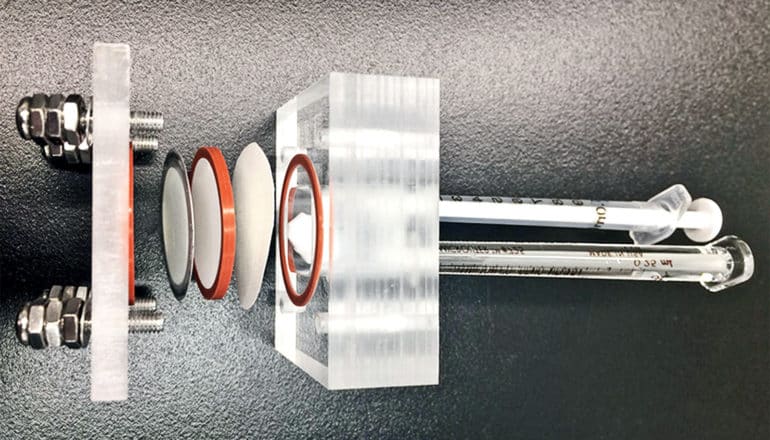
A new water purifier mimics the mangrove tree to draw salt from water, researchers report.
In addition to offering a better understanding of plants’ plumbing systems, it could lead to new desalination technologies, the researchers say.
The mangrove survives in its subtropical habitat by efficiently converting the salty water of its environment into fresh water—an engineering feat that has long baffled scientists.
“We’re showing the mechanism that’s been proposed for how mangroves work,” says coauthor Jay Werber, a former graduate student in chemical and environmental engineering in the lab of Menachem Elimelech, professor of chemical & environmental engineering at Yale University. “We’re not biologists, but we’re coming at this from an engineering perspective.”
Mangrove leaves and roots
The device, which the researchers call an artificial mangrove, combines the desalinating effects of the mangrove’s root, the capillary pumping of the leaves, and the water-conducting capability of the stem.
Key to its success is its ability to generate a high level of negative pressure, similar to what you create when drinking through a straw. In the synthetic mangrove, evaporation from specially designed membranes—acting as “leaves”—creates a large negative pressure, which drives desalination of salty water through a semi-permeable membrane “root.”
Trees need negative pressure—generated when water evaporates through the leaves—to take in enough water. Mangroves, found in Florida and particularly abundant in countries such as Indonesia, Brazil, and Malaysia, perform a doubly impressive trick, researchers say: They need to produce greater negative pressure than the typical tree to drink up the salty water of their environment. Plus, they desalinate this water with their roots, in a process called reverse osmosis.
Particularly impressive, the researchers note, is the way trees minimize the formation of air bubbles inside their system of water tubes, known as the xylem. Water tends to form bubbles under high negative pressures, which would disrupt the flow of water in the plant’s xylem.
Get rid of the salt
The new device manages a similar feat by minimizing the formation of air pockets, due in part to a porous silica structure known as a frit that’s positioned in the middle of the device, says coauthor Yunkun Wang, a postdoctoral researcher.
In addition to solving some longstanding mysteries about tree hydraulics, Werber says, the work could potentially lead to the creation of small-scale devices for separating solutions.
“Typically, you have an expensive pump that creates really high pressure to separate those things,” he says. “With the mangrove device, you can use the evaporation to drive that completely passively.”
The device would be particularly useful in situations where electricity isn’t readily available, the researchers say.
Not only does the device mimic the natural process, it generates much greater negative pressure than what the mangrove tree generates and could desalinate water with a salt concentration nearly 10-fold that of seawater.
Elimelech says this means it could lead to ways of desalinating very salty water, such as the water produced through hydrofracking.
The device also has the potential for use in flood reduction by incorporating it into “sponge cities”—urban areas designed to absorb and catch rainwater and quickly remove it, says coauthor Jongho Lee, a postdoctoral researcher.
“Buildings could be designed to work as mangrove trees: Their outside walls would work as leaves and the foundations would act as roots filtering out contaminants.”
More immediately, though, the device provides a window into a process that had long been unclear.
“We were just curious about how nature does some things, and it’s such an amazing thing that we were able to describe it with physics,” Elimelech says. “We showed that the tree follows physical principles, and that we can mimic them in a microfluidic device.”
The paper appears in Science Advances.
Source: Yale University
The post Water purifier sucks salt out of water like a mangrove tree appeared first on Futurity.
from Futurity https://ift.tt/38UXFyC
No comments:
Post a Comment